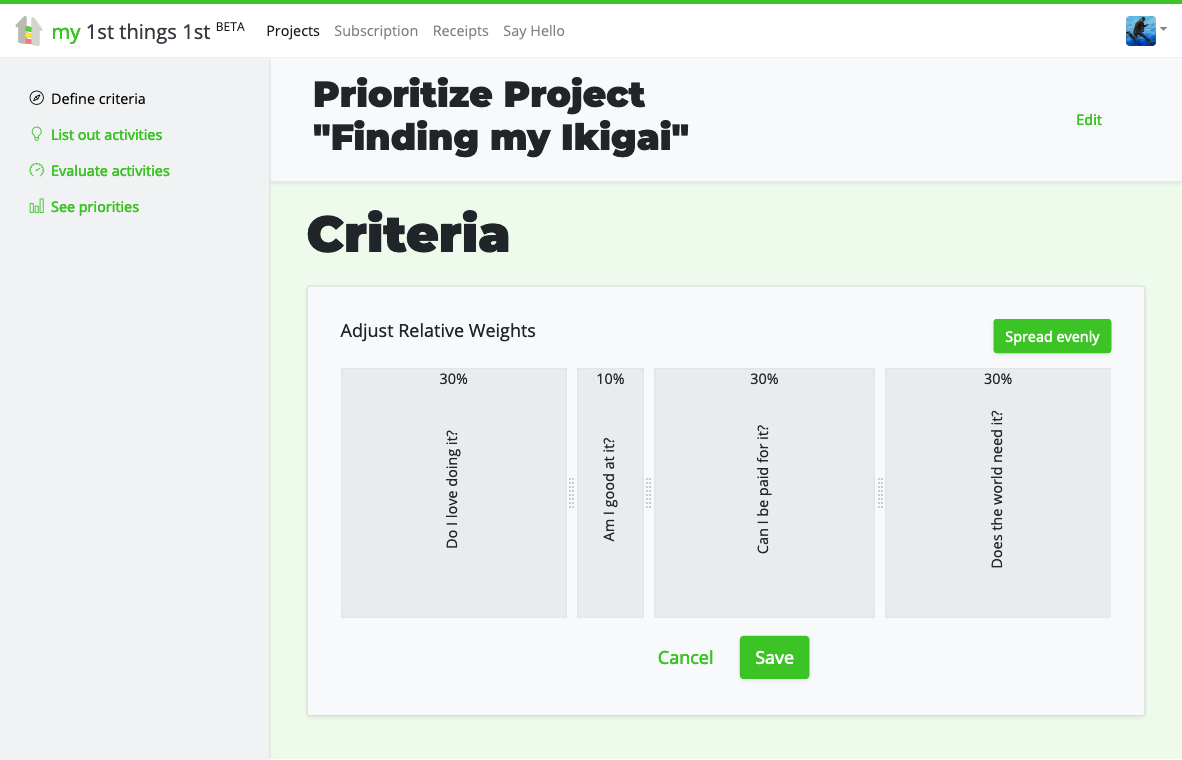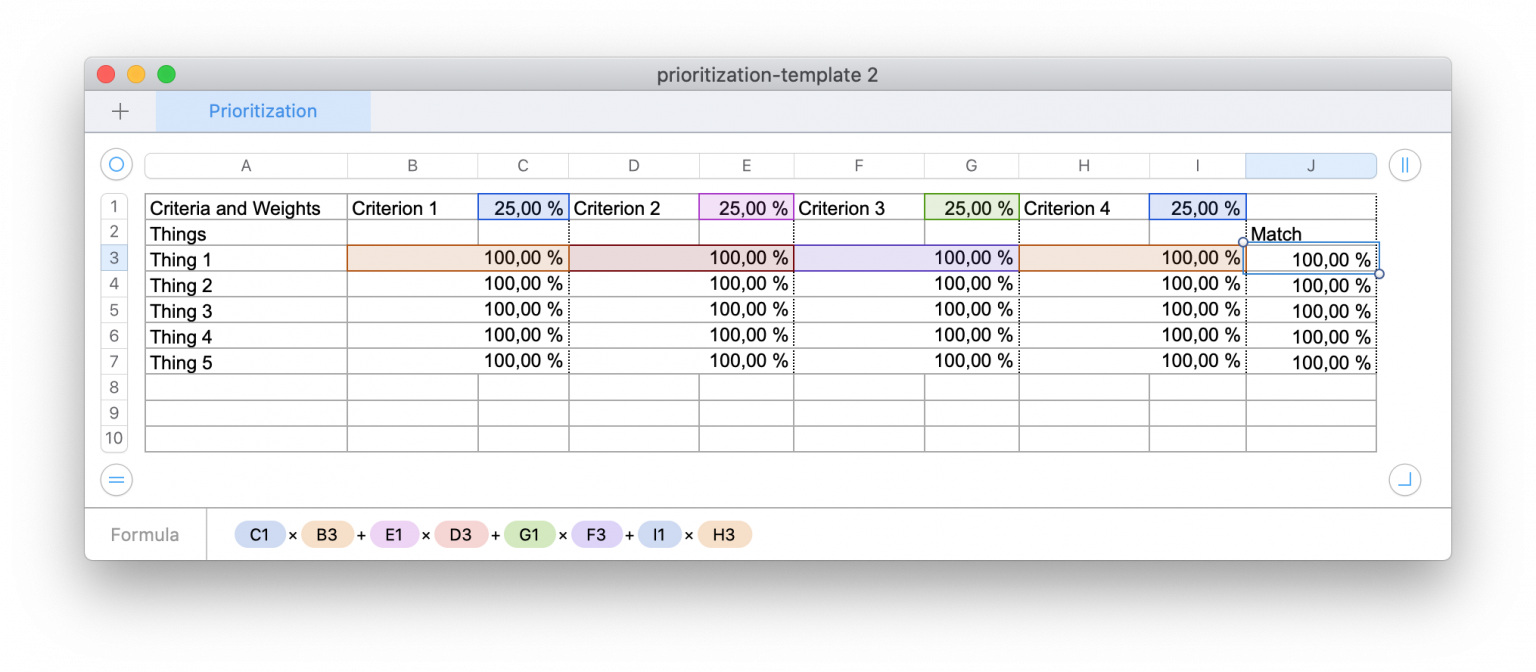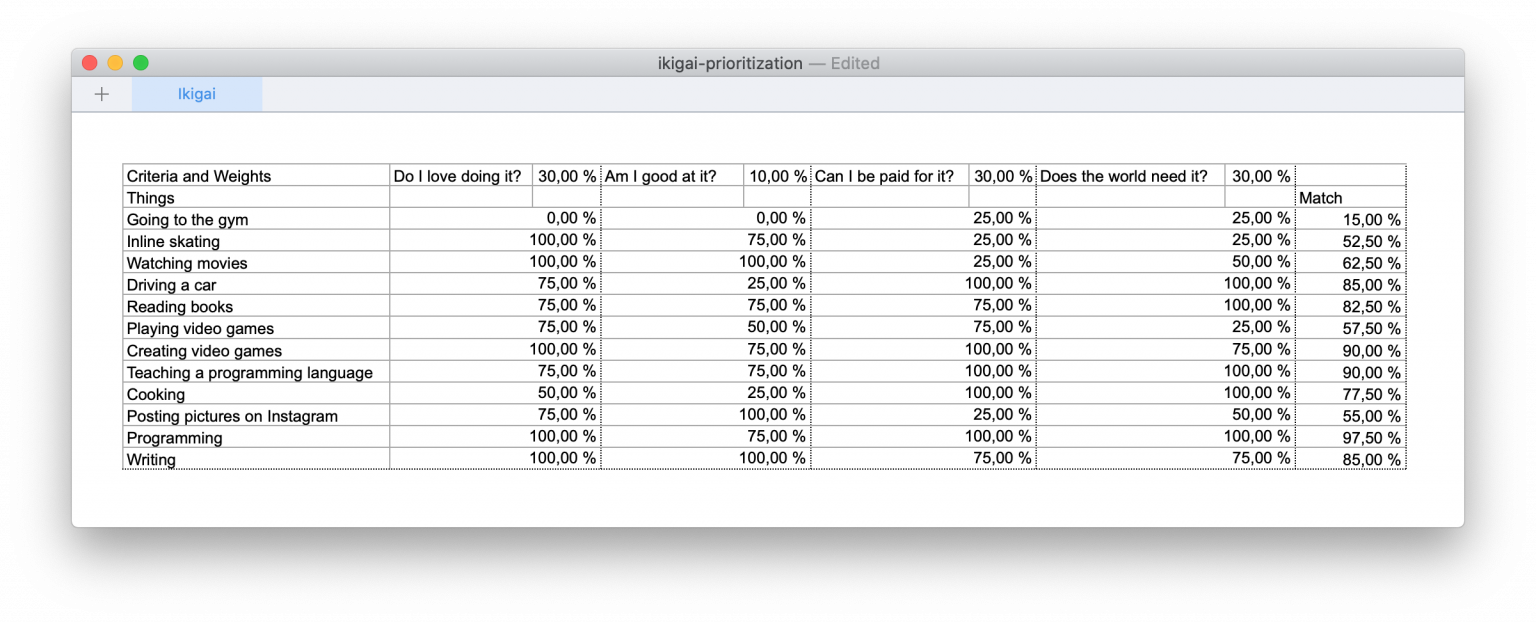The Magic of Math Behind “1st things 1st”
AIDAS BENDORAITIS / JULY 6, 2020
AIDAS BENDORAITIS / JULY 6, 2020
Here’s the audio version — perfect if you’re on the go:
Invest 2 minutes leveling up on this topic:
I am an intuitive thinker! I don’t like overanalyzing or changing my mind too often. The first choice that I make usually gets the most power. I trust my gut feeling. But sometimes there are choices to make, which depend on too many variables. I used to be lost in such cases. Some options have some benefits; others have other advantages. How can I make the right choice when I have multiple decisions depending on several criteria? Nowadays, for long-term multidimensional decisions, I use the strategic prioritizer “1st things 1st”. I will describe its formula in this article.
Strategic prioritizer “1st things 1st” lets you bring multidimensional priorities to light. It allows you to make intuitive decisions for each criterion and uses a formula (that I will describe in a moment) to calculate the priorities:

Each criterion has a relative weight in percentage. By default, these weights are spread evenly. For example, if you have 4 criteria, each of them will have a weight of 25% – the sum of relative weights is always 100%.
Just recently, a possibility to adjust the relative weights was added to the prioritizer. If we look at the project about finding your Ikigai which was the first prioritization example in this blog, you can decide to give the criterion “Am I good at it?” a lower relative weight (10%) than “Do I love doing it?” (30%), “Can I be paid for it?” (30%), and “Does the world need it?” (30%). Because practice makes perfect, and the skills can be gained over time.

Whether you evaluate the things by each criterion with yes/no answers, probabilities, stars, or percentages, behind the scenes they are all saved as numbers between 0.0 and 1.0 and can be represented as percentages between 0% and 100%.
“1st things 1st” uses the weighted average formula to calculate the priorities.
To see how much a thing matches all of your criteria, you would sum all criterion weights multiplied by corresponding evaluations:
A = w1 × e1 + w2 × e2 + w3 × e3 + w4 × e4
No worries, you don’t need to calculate anything yourself. You just do the ratings, and all the computations are delegated to the computer – that’s what computers are for.
Here is an Excel template laying out the calculations:
Generic Prioritization Spreadsheet Template

Our example with Finding Ikigai would look like this:
Ikigai Discovery Spreadsheet Template

As you can see from the last column named “Match”, programming, writing, teaching, and driving a car would be among my top priorities. Even when I can’t drive. Yet.
When making decisions, sometimes you can trust your intuition and the first thought that comes to your mind. And sometimes, the decision has to be analyzed and calculated. Why not leave those calculations to the computer? “1st things 1st” does that for you very well.
Cover photo by Michael Dziedzic